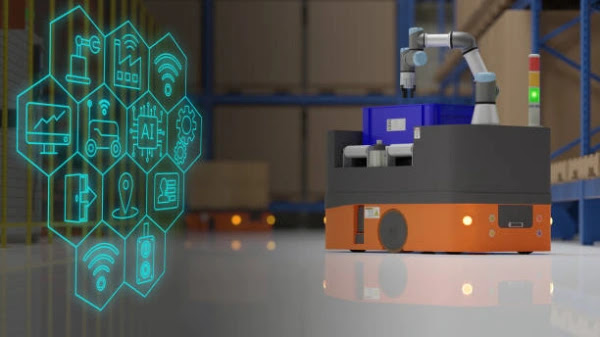Featured
- Get link
- X
- Other Apps
Smart Home Energy Management Systems
Enhancing Efficiency and Sustainability
Introduction
With the increasing focus on sustainability and the rising
costs of energy consumption, there is a growing demand for innovative solutions
to manage household energy usage efficiently. Smart home energy management
systems (SHEMS) offer a promising approach by leveraging technology to monitor,
control, and optimize energy consumption in residential settings. This article
delves into the principles of smart home energy management systems, their
components, functionalities, benefits, and the implications they have for
energy efficiency and sustainability.
Understanding Smart Home Energy Management Systems:
Smart home energy management systems (SHEMS) are integrated
systems designed to monitor, control, and optimize energy usage within
residential buildings. These systems leverage a combination of hardware,
software, and communication technologies to collect data on energy consumption,
analyze usage patterns, and automate energy-saving actions. Key components of
smart home energy management systems include:
- Sensors and meters: SHEMS utilize
sensors and smart meters to monitor energy usage in real-time, collecting
data on electricity, gas, water, and other utilities. These sensors
measure parameters such as energy consumption, temperature, humidity, and
occupancy, providing insights into household energy usage patterns and
identifying opportunities for optimization.
- Control devices: Smart home energy
management systems are equipped with control devices such as smart
thermostats, smart plugs, and smart appliances that enable users to
remotely monitor and control energy-consuming devices and systems. These
devices can be programmed to adjust settings based on user preferences,
occupancy patterns, or time-of-use pricing, optimizing energy usage while
maintaining comfort and convenience.
- Communication networks: SHEMS rely
on communication networks such as Wi-Fi, Zigbee, Z-Wave, or Bluetooth to
connect sensors, meters, and control devices to a central hub or gateway.
These communication networks enable seamless data exchange, remote
monitoring, and control of energy-consuming devices and systems from
smartphones, tablets, or computers.
- Energy management software: Smart
home energy management systems are powered by energy management software
that collects, analyzes, and visualizes data on energy consumption, costs,
and savings. This software provides users with insights into their energy
usage patterns, identifies energy-saving opportunities, and recommends
actions to optimize energy efficiency and reduce utility bills.
Functionalities of Smart Home Energy Management Systems:
Smart home energy management systems offer a range of
functionalities aimed at optimizing energy usage, reducing costs, and enhancing
user comfort and convenience. Some key functionalities include:
- Real-time monitoring: SHEMS
provide real-time monitoring of energy consumption, allowing users to
track their electricity, gas, and water usage on a continuous basis.
Through intuitive dashboards or mobile apps, users can view their energy
usage patterns, identify energy-intensive appliances or behaviors, and take
corrective actions to reduce consumption.
- Energy analytics: Smart home
energy management systems analyze historical energy data to identify
trends, patterns, and anomalies in household energy usage. By leveraging
advanced analytics techniques such as machine learning and data mining,
SHEMS can provide personalized insights and recommendations to help users
optimize their energy usage and reduce utility bills.
- Energy optimization: SHEMS
optimize energy usage by automatically adjusting settings and schedules
based on user preferences, occupancy patterns, and energy-saving goals.
For example, smart thermostats can regulate heating and cooling systems to
maintain comfortable temperatures while minimizing energy waste, while
smart plugs can turn off idle devices to eliminate standby power
consumption.
- Demand response: Smart home energy
management systems support demand response programs by enabling users to
participate in load-shifting and peak shaving activities. During periods
of high energy demand or peak pricing, SHEMS can automatically adjust
energy usage, such as delaying the operation of non-essential appliances
or charging electric vehicles during off-peak hours, to reduce strain on
the grid and lower electricity costs.
- Integration with renewable energy sources:
SHEMS can integrate with renewable energy sources such as solar
panels, wind turbines, or battery storage systems to maximize the use of
clean energy and reduce reliance on the grid. By monitoring energy
production and consumption in real-time, SHEMS can optimize the use of
renewable energy resources, store excess energy for later use, and ensure
a reliable and sustainable power supply for households.
Benefits of Smart Home Energy Management Systems:
Smart home energy management systems offer numerous benefits
for homeowners, utilities, and society as a whole, including:
- Energy savings: By providing
real-time monitoring, analytics, and optimization capabilities, SHEMS help
homeowners identify energy-saving opportunities and reduce their
electricity, gas, and water bills. Studies have shown that households
equipped with smart home energy management systems can achieve significant
energy savings ranging from 10% to 30%.
- Increased comfort and convenience:
Smart home energy management systems enhance user comfort and convenience
by automating energy-saving actions and adjusting settings based on user
preferences. For example, smart thermostats can learn user behavior over
time and automatically adjust temperatures to maintain comfort while
minimizing energy consumption.
- Environmental sustainability: By
optimizing energy usage, integrating renewable energy sources, and
reducing greenhouse gas emissions, smart home energy management systems
contribute to environmental sustainability and climate change mitigation
efforts. By reducing energy consumption and reliance on fossil fuels,
SHEMS help mitigate the environmental impacts associated with energy
production and consumption.
- Grid stability and resilience:
Smart home energy management systems support grid stability and resilience
by enabling demand response, load shifting, and peak shaving activities.
By reducing peak demand and balancing energy supply and demand in
real-time, SHEMS help alleviate strain on the grid, prevent blackouts, and
enhance the reliability and resilience of the electricity infrastructure.
- Economic benefits: Smart home
energy management systems offer economic benefits for utilities, grid
operators, and society as a whole by reducing the need for costly
infrastructure upgrades, mitigating peak demand charges, and deferring
investments in new power generation capacity. By optimizing energy usage
and reducing waste, SHEMS help utilities manage energy resources more
efficiently and cost-effectively.
Implications for Energy Efficiency and Sustainability:
Smart home energy management systems have significant
implications for energy efficiency and sustainability, offering a scalable and
cost-effective solution to address energy-related challenges in residential
buildings. By empowering homeowners to monitor, control, and optimize their
energy usage, SHEMS help promote energy conservation, reduce greenhouse gas
emissions, and build more sustainable communities. Furthermore, by enabling
demand response, integrating renewable energy sources, and enhancing grid stability,
smart home energy management systems play a critical role in transitioning
towards a clean, resilient, and sustainable energy future.
Conclusion
Smart home energy management systems represent a
transformative solution to manage household energy usage efficiently, reduce
costs, and promote sustainability. By leveraging technology, data analytics,
and automation, SHEMS empower homeowners to monitor, control, and optimize
their energy consumption in real-time, leading to significant energy savings, increased
comfort, and environmental benefits. As the adoption of smart home energy
management systems continues to grow, stakeholders must address challenges
related to data privacy, interoperability, and user engagement to realize the
full potential of these innovative technologies and accelerate the transition
towards a more sustainable and energy-efficient future. With collaboration,
innovation, and commitment, smart home energy management systems can help build
smarter, greener, and more resilient homes and communities for generations to
come.
- Get link
- X
- Other Apps


